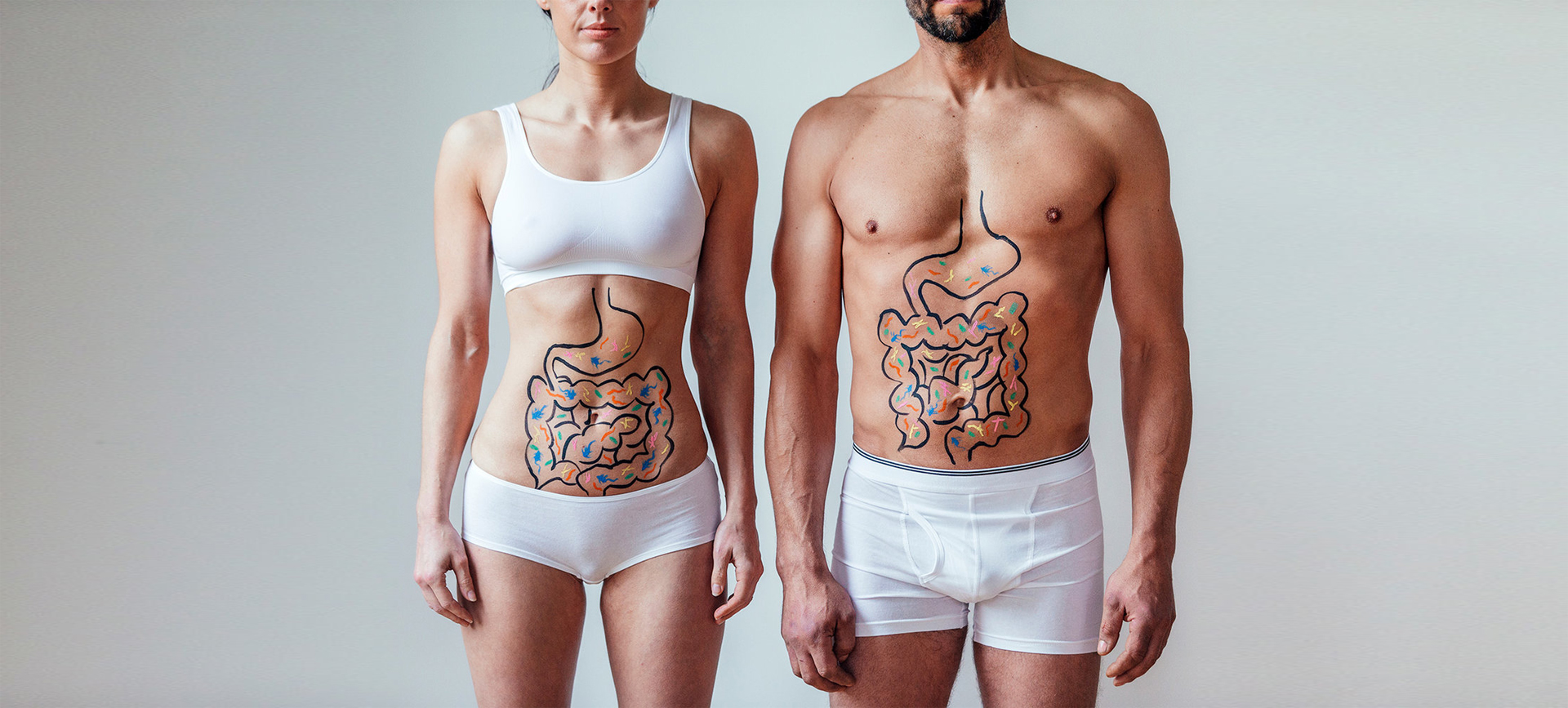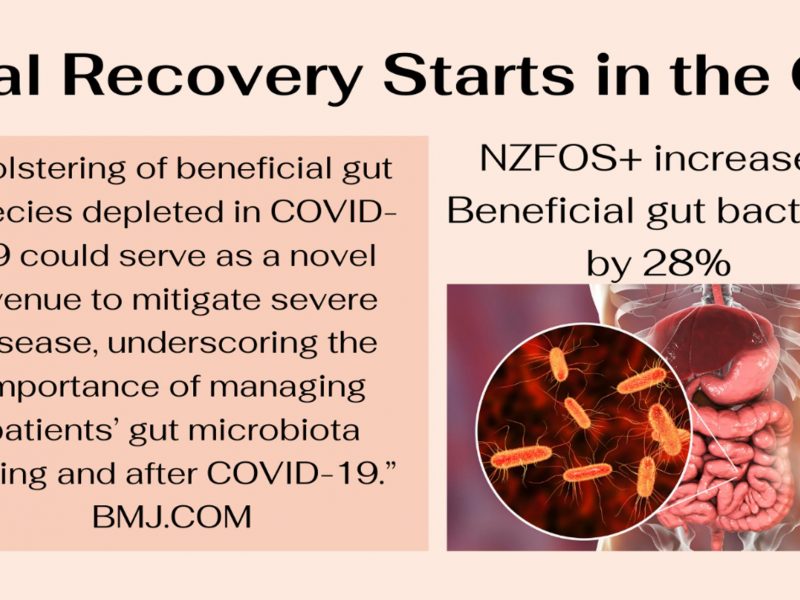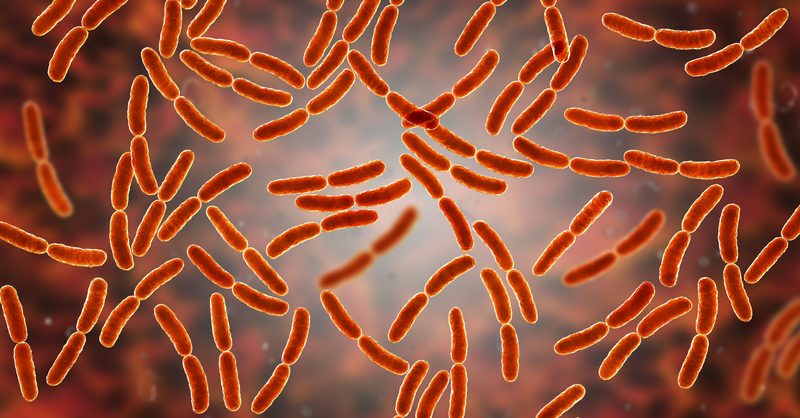
The Secret to Gut Health that Goes Beyond Probiotics
Did you know that there are 10 times more bacteria than cells in your body?
Yup, it’s true!
These microscopic bacterial colonies know collectively as the human microbiome, weigh approximately 2 kilograms, and contribute to a wide variety of important biological functions including immunity, mental health, hormone production, digestion and even how nutrients and drugs are processed by the body!
The role of bacteria in health and wellbeing has become far more obvious in recent years, and is the reason probiotic supplements have skyrocketed in popularity and availability. This increased awareness is a great thing, as taking probiotics can be an effective way to pump your body with beneficial bacteria.
There is, however, one important factor that many are unaware of when it comes to gut bacteria: what you feed the bacteria in your body has a significant influence on their ability to grow and function!
Whether you’re dosing with probiotics or aiming to support the existing bacteria within your body, today we’ll discuss prebiotics – the ‘foods’ that support the growth of these beneficial bacteria.
Let’s get started!
Probiotic bacteria must eat
It may seem like a strange concept at first. Surely, adding in probiotics on top of your already functioning microbiome is enough, right?
Unfortunately, it’s far more complex than that.
Don’t misunderstand, probiotics on their own can certainly provide benefits – but, depending on the environment that they are in, which is dictated by factors such as temperature, moisture levels, pH, oxygen and energy availability, different types of bacteria can thrive while the others die off.
When we consider energy availability, even the tiny bacteria need food to thrive and grow. Not just any food, though.
Take sugar, for example. Many of our health problems can be linked back to the amount of refined sugar in our diets. Not only does sugar influence the level of inflammation in your body, it also provides the most favourable energy source for harmful bacteria thrive on.
Helpful bacteria need something else to feed off of. That’s where prebiotics come in – helpful compounds that feed and support the growth of beneficial bacteria currently within the gut, as well as increase the efficacy and survival of probiotic supplements.
What are prebiotics?
Prebiotics are made up of fibres, known as oligosaccharides, that nourish the helpful bacteria in the gut. fibre is actually indigestible by the body and, so, it’s able to pass into the large intestine, where the majority of bacteria live. These fibres are then fermented by your bacteria, which feeds them and provides the essential nutrients they need to thrive.
There are so many benefits that come from consuming prebiotics, including:
- Healthy digestion
- Healthy immune system
- Healthy energy consumption
- Supporting heart health, bone health, metabolism, mood, stress and healthy weight management
So, what’s one of the best ways to pack in these helpful prebiotics? Diet!
Increasing your intake of prebiotic foods is a great, all-natural way to support your microbiome and improve overall health.
Below, you’ll find a list of all-natural, prebiotic-packed foods to take your gut to the next level!
Top 11 prebiotic-packed foods to feed your gut bacteria
-
- Dandelion greens. Full of fibre and antioxidants, dandelion greens are a great food for your gut bacteria. Add this impressive ingredient to salads, juices or smoothies!
- Jerusalem artichokes. Known in the nutrition world for being rich in prebiotic fibres while also providing other essential nutrients such as potassium and vitamin B1, these delicious artichokes are a great addition to any health routine. Additionally, they’re on the low glycaemic scale and can even help you to manage your blood sugar levels. Saute, bake, boil or steam these vegetables, eat them raw or, even, blend them into dips!
- Raw garlic. Not only does garlic provide an easy way to increase the flavour of any savory meal, but, it can also boost gut health. Garlic has antioxidant properties. Raw garlic is great as a flavour enhancer in salads, dips, and spreads or to sprinkle on top of cooking as a garnish.
- Onion. Besides their immune-supporting properties, onions contain a specific source of fibre, called inulin, that feeds your gut bacteria. As onions, shallots, and spring onions all belong to the same family of vegetables, you can eat whichever of these tickles your taste buds. Use these ingredients raw in dips and salads or cook them into soups and stir-frys.
- Leeks. While they differ in appearance, leeks are also part of the onion family, meaning they, too, are a great source of fibre to support your good bacteria. Additionally, leeks contain nutrients called flavonoids, which are potent antioxidants to help the body to mop up harmful free radicals and, they provide a rich source of vitamin K to promote bone health. Leeks are great when eaten both raw or cooked and can be roasted to make a delicious side dish!
- Asparagus. Asparagus is an impressive veggie all around, as it can soothe the gut and promote the growth of helpful bacteria. Whether it’s raw, steamed, pan-fried or roasted, asparagus tastes great. Tip: sprinkle raw garlic on top of cooked asparagus for a double-hit of prebiotic benefits!
- Just ripe bananas. Green bananas are lower on the glycaemic index scale than ripe bananas. This is because the carbohydrates in them change into more simple sugars as they ripen. It’s why bananas have such a bad reputation for being high in sugar, but, it’s typically on the really yellow or browning ones that actually do. Eating just ripe bananas is actually better for the fibre content, and for your blood sugar, too. Combine bananas with nuts or another fat source to slow digestion in order to prolong energy release and keep you feeling full for longer!
- Chicory root. This fibre has been found to stimulate the growth of helpful bacteria while reducing the ability of more harmful bacteria to thrive and, can even support healthy blood sugar levels and hormonal balance. Chicory root can be used in a lot of diverse recipes – including being used as a coffee substitute!
- Apples. Apples, particularly the skins, contain a fibre called pectin, which has shown to calm and soothe the large intestine due to its prebiotic potential. No matter the apple you choose, eat it with the skin on to gain the full prebiotic effect of this healthy fruit. Apples can be eaten raw or cooked and, just as bananas, you can combine them with a healthy fat to slow digestion.
- Jicama. This potato-like root vegetable is low in calories and high in inulin fibres. If you haven’t tried jicama, don’t be intimidated! You can enjoy jicama just like you would a potato!
- Yacon root. Talk about saving the most interesting for last! Part of the sunflower family, yacon is a tall herb from South America which develops roots that can weigh over 1kg! Yacon is rich in fructo-oligosaccharides (FOS) and inulin, which are potent prebiotic fibers that stimulate the growth of good bacteria in the lower intestine. In fact, yacon has shown specifically to stimulate the growth of a type of bacteria known as bifidobacteria, which is able to discourage the growth of pathogens within the human colon. If that wasn’t enough, yacon acts as a powerful antioxidant and has shown to support healthy cholesterol levels, balance blood sugar and help with occasional constipation. These properties have collectively shown to benefit overall wellness, making yacon a truly remarkable root to add into your routine!
By adding these foods to your daily diet, your gut bacteria can begin to flourish and provide you with a whole new world of health benefits!
But, with any dietary change, it’s important to consider any potential consequences when getting started. Mainly, when it comes to prebiotics, the increase in fibre and changes in bacterial populations will have a big impact on your gut and, if done too quickly, may overwhelm your system and produce digestive discomfort – which is the opposite of what prebiotics are meant to do!
In order to ensure a comfortable transition to good health, take these four tips into account when you begin incorporating prebiotic foods:
#1. Be gradual. Start with small doses of fibre – adding in small amounts of these foods and gradually increasing them is better than cramming as much in you as possible from the get-go. Additionally, cooked foods are easier on your system and will assist in digestion. If you’re used to eating loads of fruits and veggies, you may be able to start with larger amounts or more raw foods!
#2. Drink more water. fibre pulls more water into your digestive tract to help to move things along. If you’re dehydrated, things can get stuck and you may end up constipated and bloated. When upping your fibre intake, be sure to compensate by also upping your water intake. A few extra glasses a day should more than make up for things!
#3. Combine pre- and probiotics. The best way to get your pre- and probiotics is from whole foods – and, there are options available that contain both! These include fermented vegetables such as kimchi, sauerkraut and pickles which contain both live bacteria and prebiotic fibres to support their growth.
#4. Snack. An easy way to include prebiotics into your diet is to snack on them throughout the day, which is less likely to be overwhelming to your system as they will be consumed in smaller amounts each time. Apples, cherries, flaxseed crackers and jicama chips are great, light options.
Whether you want to get the most out of your probiotic supplements or you’re simply trying to support the gut bacteria you’ve got, it’s important to feed these bacteria what they need to thrive. By adding the prebiotic foods above, you’ll be amazed at how these simple dietary changes can have you experiencing a whole new host of health benefits.
So, remember your motto: prebiotics provide and protect!








